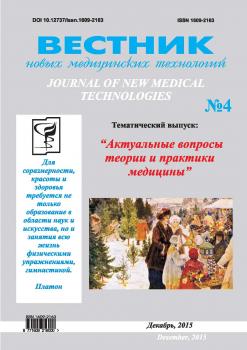Reference principle of electropuncture diagnostics is based on prior determining the individual testing voltage using the “reference” point with subsequent measurement of the currents in the acupuncture points. This approach improves the accuracy of estimation of functional states in comparison with other methods of electropuncture diagnostics and provides the necessary personalization of diagnostic procedures. Based on analyzing and summarizing the experience of the clinical use of electropuncture diagnostics ʺBioreperʺ, its new features are revealed. It is found that the magnitude of testing voltage in a reference point is a non‐specific indicator of the level of health and the degree of distress the body. It is shown that the measurement of testing voltage in the reference point allows to monitoring the functional status of patients, to identifying the severity of pathological changes in the body and to assessing their dynamics during treatment and rehabilitation. The close correlation between the magnitude of testing voltage and the severity of pathogenesis reactions of cardiovascular disease, broncho‐pulmonary, digestive and musculoskeletal systems was revealed. This phenomenon has been confirmed in animal studies (dogs) with the pathology of the stomach, pancreas and gall bladder. It is also found a direct correlation between the magnitude of testing voltage in the reference point and the severity of pain.
reference principle of electropuncture diagnostics, individual testing voltage (Utest), monitoring of the functional state of patients on the magnitude of testing voltage in the reference point.
Неотъемлемой составляющей рефлексоте‐
рапии являются методы рефлекторной диагно‐
стики, позволяющие выявлять функциональ‐
ные нарушения деятельности органов и систем
организма и формировать адекватный алго‐
ритм рефлексотерапевтических процедур.
Наибольшее распространение получили диаг‐
ностические методы, основанные на регистра‐
ции электрофизиологических показателей то‐
чек акупунктуры – электропунктурная диагно‐
стика (ЭПД) [1]. Разработанный ранее репер‐
ный принцип ЭПД [2‐4,6,7,9,10] позволил повы‐
сить точность оценки функциональных состоя‐
ний по сравнению с другими методами ЭПД
путем предварительного определения индиви‐
дуального напряжения тестирования (Uтест) по
реперной точке с последующим измерением
токов в точках акупунктуры ушной раковины,
обеспечив тем самым требуемую персонализа‐
цию диагностических процедур.





